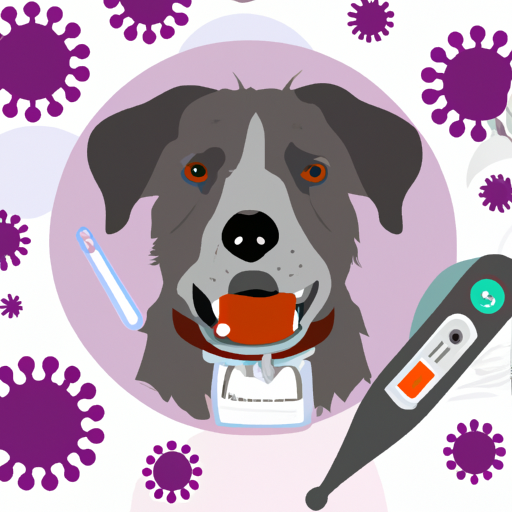As a caregiver, your dog’s health and well-being are of utmost importance to you. One among the many ailments that can potentially affect your canine companion is parainfluenza. Let’s delve into understanding this illness, its symptoms, prevention strategies, and treatment options.
1. Understanding Canine Parainfluenza
Parainfluenza in dogs, also known as canine parainfluenza or CPIV, is a highly contagious respiratory disease caused by the parainfluenza virus. This virus is one of the many pathogens that contribute to the Canine Infectious Respiratory Disease Complex, commonly known as ‘kennel cough.’
While it mostly affects dogs in communal situations like kennels, shelters, and pet stores, it can also affect dogs that come in contact with an infected dog.
2. How Parainfluenza is Transmitted
Parainfluenza is primarily transmitted through airborne droplets expelled when an infected dog barks, coughs or sneezes. It can also spread through shared toys, food and water dishes, or direct contact with an infected dog.
Humans cannot contract this virus, but they can inadvertently carry it on their clothes or hands from one dog to another.
3. Recognizing the Symptoms of Canine Parainfluenza
Signs of parainfluenza in dogs can vary in severity but generally include:
- Persistent, dry cough
- Sneezing and nasal discharge
- Fever
- Lethargy
- Loss of appetite
It’s crucial to consult a vet if you notice these symptoms, as they can also indicate other severe conditions.
4. Preventing Parainfluenza
Prevention is always better than cure, particularly when it comes to contagious diseases like parainfluenza. Here are some measures you can take:
-
Vaccination: Vaccination is the most effective way to prevent parainfluenza. Most vets include the parainfluenza vaccine in their core vaccine protocol for puppies, with regular boosters for adult dogs.
-
Hygiene: Maintain high hygiene standards in places where dogs congregate. Regularly clean and disinfect shared toys, food and water dishes.
-
Isolation: If a dog is infected or suspected to be, isolate it from other dogs to prevent the spread of the virus.
5. Treating Canine Parainfluenza
While there’s no specific cure for parainfluenza, supportive care can help manage symptoms and speed up recovery. This usually includes:
- Rest and isolation from other dogs
- Hydration and good nutrition
- Cough suppressants or antibiotics, if prescribed by a vet
Remember, each dog reacts differently to illness and treatments. Always consult with your vet for the best course of action.
Frequently Asked Questions
Q: How long does it take for a dog to recover from parainfluenza?
A: Most dogs recover within 2-3 weeks, but it can take longer in severe cases or if the dog has other health conditions.
Q: Can humans get parainfluenza from dogs?
A: No, canine parainfluenza is not zoonotic, meaning it cannot be passed from dogs to humans.
Q: Is there a specific season when parainfluenza is more prevalent?
A: Parainfluenza can occur at any time of the year. However, it may be more common in seasons when dogs spend more time in close contact, such as summer and holiday boarding times.
Q: Can parainfluenza recur in a dog that’s had it before?
A: Yes, a dog can get parainfluenza more than once. Vaccination is the best protection against recurrent infections.
Q: Can parainfluenza lead to other health problems?
A: If left untreated, parainfluenza can lead to pneumonia or other serious respiratory diseases.
Please note that this guide is intended to provide a general understanding of canine parainfluenza. It should not replace professional veterinary advice. Always consult with your vet for any health concerns regarding your pet.



